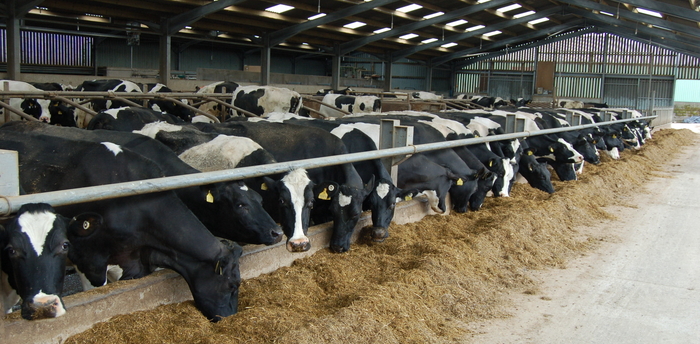Production drops and compromised performance will be inevitable if dairy farmers fail to address the impact of mycotoxin contamination in animal feeds, warns nutritional supplement manufacturer UFAC-UK.
With almost half of recent TMR samples, produced using spring-summer silage, containing a mycotoxin level considered either moderate or high risk to dairy cows, farmers are being urged not to underestimate the considerable impact on herd health and performance, and act quickly to minimise losses, particularly in yield and butterfat.
With the Food and Agriculture Organisation of the United Nations (FAO) estimating at least 25 percent of the world’s food crops are contaminated with mycotoxins, it is a threat that should not be ignored.
In a significant development to address the threat, independent tests now demonstrate the effectiveness of a new binding solution to reduce the level of mycotoxin challenge and avoid sustained health and performance impacts.
Mycotrap is an independently tested mycotoxin binder, demonstrating proven, effective performance in minimising the levels of mycotoxins within the rumen, therefore reducing their overall affect.
“Mycotoxins are toxic chemicals produced by fungi that readily colonise crops in the field and in storage,” says UFAC-UK national sales manager Nigel Bateson. “Even at very low levels, they are extremely harmful to ruminants, particularly freshly calved dairy cows.”
Moulds which commonly grow on grass silage and other wet feeds stuffs can often produce mycotoxins. They can be found in home grown and imported feedstuffs, feed ingredients, forages and bedding materials.

“Mycotoxins within the rumen can have a major effect on the rumen microbes, ultimately reducing feed digestibility, which subsequently will reduce available nutrients for milk, body condition and/or reproduction,” explains Mr Bateson.
The effects of mycotoxin challenge appear quickly, and are best treated equally fast to minimise the losses resulting from them. Using a broad-spectrum binder will optimise the ability to achieve this.
“Mycotrap is an enhanced, broad spectrum mycotoxin absorbent,” says Mr Bateson. “It works by incorporating specific activated clay minerals with added glucose pre-cursor, glycerine, to provide enhanced toxin control and improved liver function. Glycerine also has anti-mould properties which helps minimise heating in the TMR.”
This specialised clay mineral compound has been independently tested at Gent University, a centre of excellence for mycotoxin binder research, and is proven to have strong binding capacity for a broad range of economically damaging mycotoxins at all pH ranges, throughout the entire gastrointestinal tract.
A non-digestible, free-flowing and palatable product, Microtrap is easily incorporated into feeds, helping to maintain the rumen pH at a healthy threshold. It minimises the risk of mould growth in feed and maintains performance by supporting recovery of immune status by increasing energy supply.
“Reducing the effect of mycotoxins means better immunity to disease challenges, improved daily feed intake and increased milk production,” says Mr Bateson.
“It also means improved rates of conception and reduced embryonic mortality, meaning more numbers are born alive,” he concludes.


